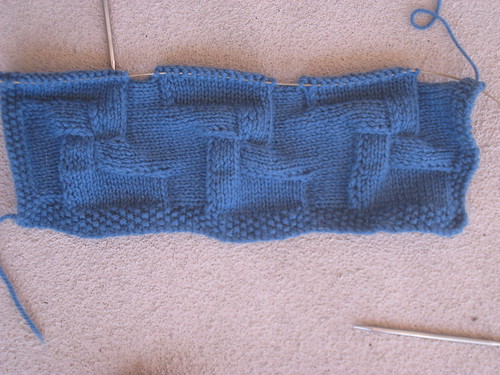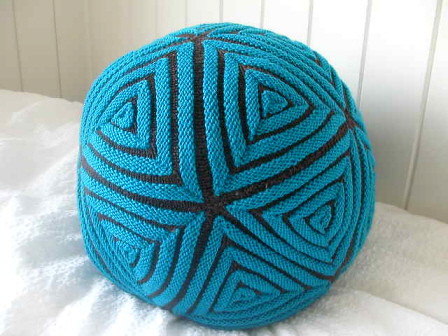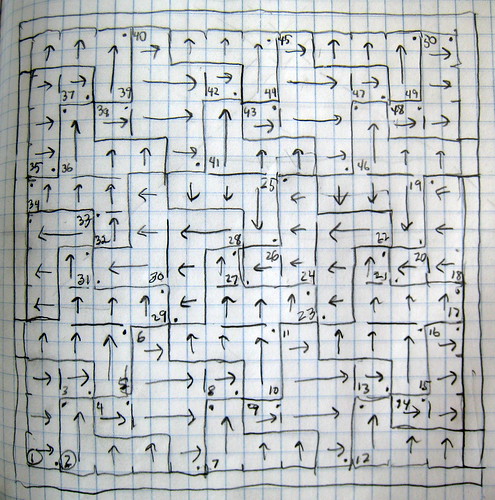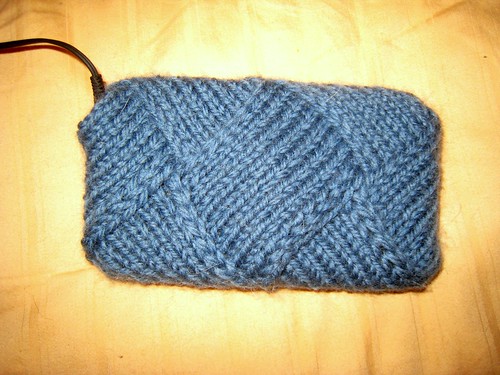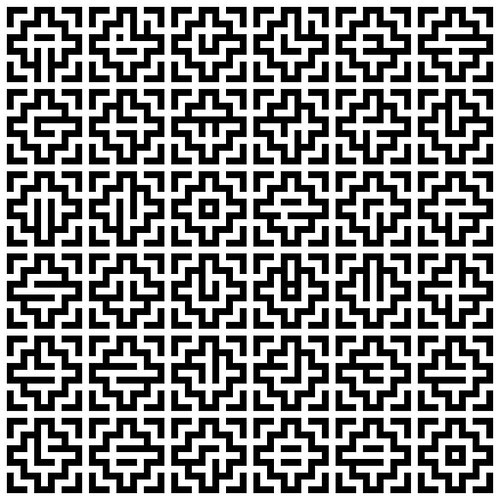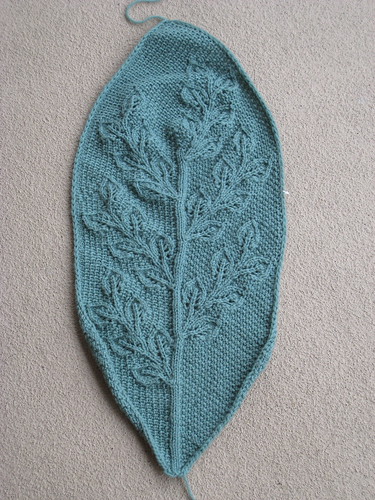The diagram I posted earlier is 1/3 done. I am happy to say that the swastikas are not apparent in the knitted piece. What is interesting, and what I didn't anticipate, is that there is a sort of bas-relief of pinwheel shapes where the 4 motifs come together. Once I'm done with the next row, we'll see how the opposite-sense motifs come together.
Thursday, May 28, 2009
Tuesday, May 26, 2009
Monday, May 25, 2009
Hound's-tooth check entrelac
Diagram showing how to knit entrelac with motifs that are in the shape of hound's-tooth check. Each motif needs to be knit in two or three pieces for the whole piece to be knit seamlessly and in one go (one continuous thread). I haven't knitted this out yet. I'm hoping the swastika shape will not be obvious in the knitted piece.
Saturday, May 23, 2009
Wednesday, May 13, 2009
Wednesday, May 06, 2009
Leafy branch
An experiment in knitting, using hexagonal-shaped units combined to form a larger hexagonal unit. Needs to be blocked to lie flat.
This is another idea in the realm of "substitution tiling." Take a shape like a hexagon, then subdivide it and subdivide it again. In this case, you take a leaf, then for the veins of the leaf substitute branches with leaves. This could be taken to another iteration, but I lost interest in actually knitting it.
Closed-form entrelac
OK, I think calling it “3-D Entrelac” is over. From now on, I’m calling it “closed-form entrelac.” After all, every piece of entrelac knitting exists as a 3-D object.
I have been ruminating over the last few weeks about what forms are possible in entrelac. Here are the limitations I have placed on the closed-form entrelac knitting I like to do:
- Single continuous thread of yarn. Start making one entrelac square and keep adding squares, each connected to a previous square, until you have finished the piece. Never break the yarn and pick up the knitting again somewhere else on the piece.
- Minimize the number of grafted joins. The only time I want to use a grafted join between two entrelac squares is on the last seam, where you are trying to connect the top of an entrelac square to the side of a previous one.
Substitution tiling
One way to generate shapes in entrelac pieces is to start with a regular piece of entrelac knitting, then substitute a structure made up of more than one square for one of the squares. Repeat ad libitum.
Turns out there’s all kinds of ways to do this. I haven’t knitted most of them out, but in my head I've come up with several.
The first one I thought of was to "pop out" a cube from a square. For one of the squares in an entrelac piece, substitute a cube with one of its faces missing. So you have a flat piece of entrelac with a cube popping out of it. You can always turn the 5/6 cube inside out, so you have an innie rather than an outie.
If you keep going with this substitution, you can make any shape composed of cubes that are stuck together, and it will obey the constraints above.
More later.
